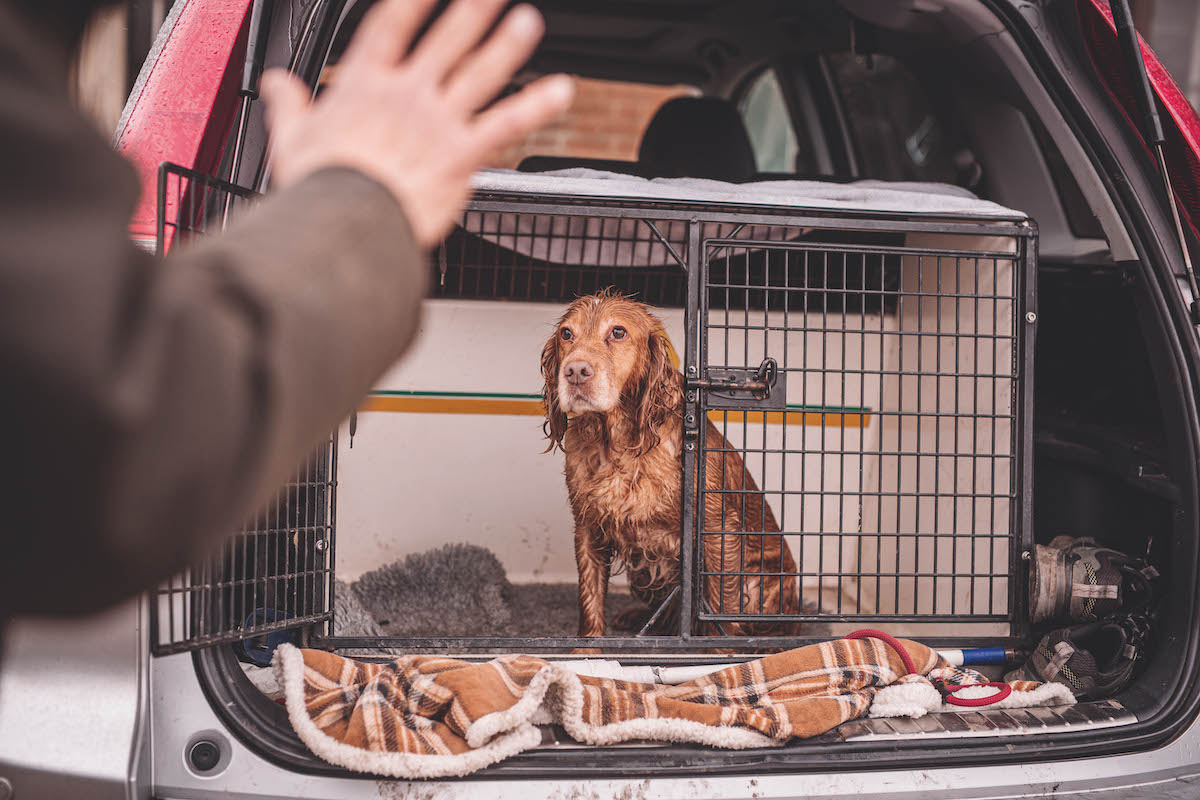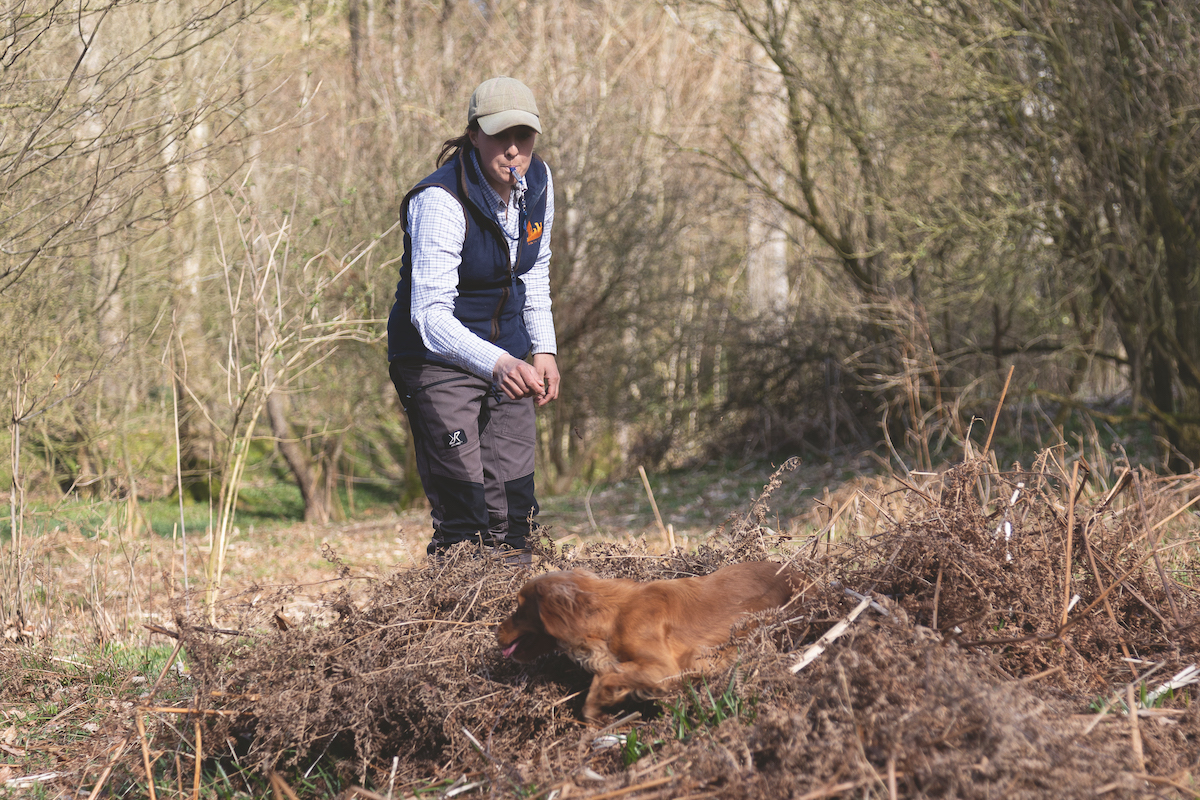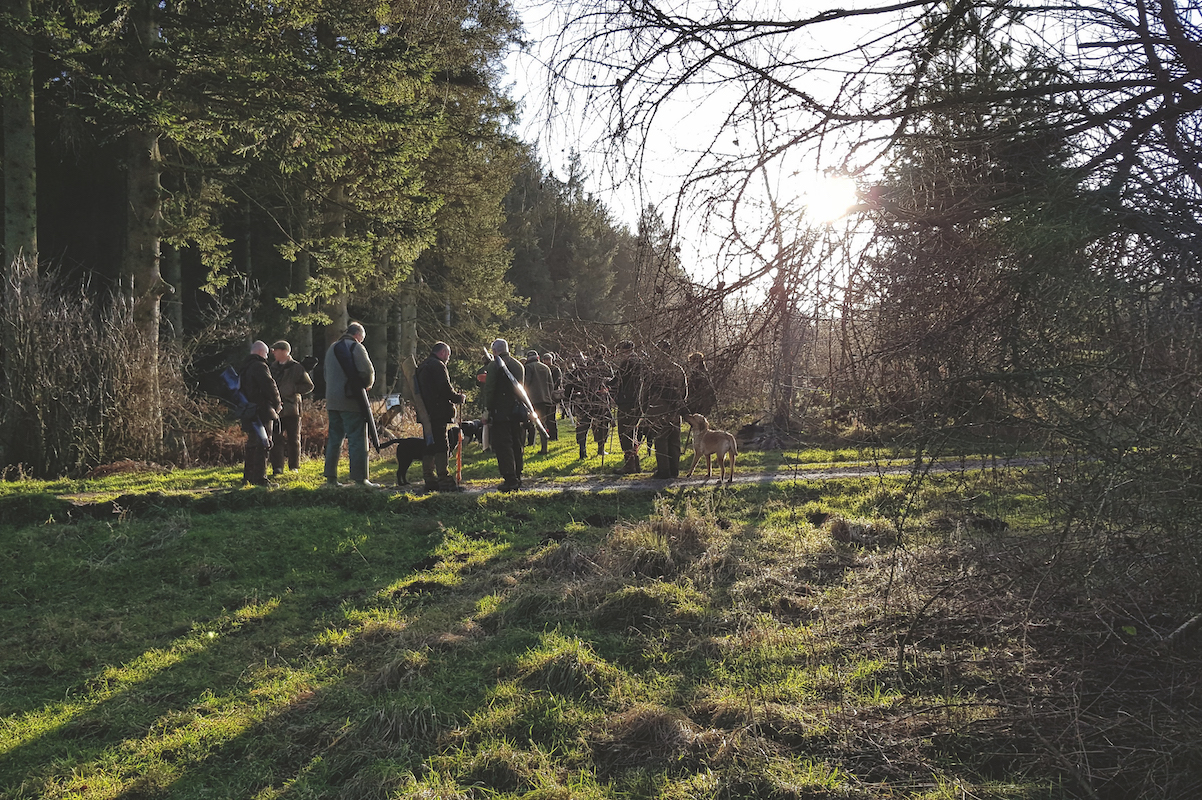Teaching a dog manners : this is the training you need to do
Plenty of training can be done on safety and etiquette to ensure an enjoyable shoot day for both handler and dog, writes Ellena Swift

Lots of preparation can be done before a shoot day, such as teaching your dog not to charge out as soon as the boot is opened.
My dogs, like most, seem to know when they are going out working. Even if you try to behave exactly as you would on a normal day, they are never fooled. So before you have even arrived, the dogs are wound up and overexcited, knowing what is to come. (Read a shoot day is no place for an overexcited dog.).)
Dog manners
There tend to be two different approaches when people arrive with dogs on shoots. Most leave their dogs in their vehicle until ready for the off; however, there are some who allow their dogs out to have a run, toilet and generally make a nuisance of themselves. Ideally your dog should be exercised, toileted and arrive ready for the day. If you must allow your dog time when you arrive, it is important to ensure your precious pooch is not defecating all over your host’s lawn, cocking its leg on every car wheel or, even worse (yes, this happens a lot), chasing the host’s chickens or cat.
View this post on Instagram
Some shoots require the Guns to walk to their pegs, or the beating and picking-up teams may have to walk a long way to get into position. Again, it is important your dog will walk calmly to and from drives, which is good working dog manners. Often when walking around estates to get from one place to another, you will be passing game cover, neighbouring land or even pens. Your dog must be able to remain calm when moving from one place to another.
Another big ‘no no’ is a noisy dog. This may sound like a fairly obvious thing to say, but I see no end of dogs arriving at a day’s shooting yipping and yapping in anticipation and excitement. It is amazing how many handlers happily exclaim, “Oh, he will only do it until we start.” This is massively unhelpful and a noisy dog will quickly and efficiently move birds a long way away to a place they are not wanted.

Shoot day transportation can be a crowded affair, so ensure your dog is well socialised
Transportation training
Another means of moving around an estate is obviously via some vehicle. Your role at the shoot will probably dictate what vehicle you travel in. Most beating teams will be transported in a beaters’ trailer or wagon. These are often crowded, noisy and can be extremely stressful for a dog who has not experienced this before. Help your dog by preparing them and teaching them how to sit between your legs calmly. Teach them not to jump on the seats or others when they are sat next to you. No one likes the over-friendly cocker spaniel jumping all over their lap when it is soaked and covered in muck.
Another important job when teaching dog manners is to teach the dog how to get in and out of transport; it is amazing how many dogs cannot work out how to use the steps into a wagon — particularly the Gun’s peg dogs who perhaps have not been in a shooting bus and don’t know how to jump in or out confidently. Dog manners exiting a vehicle are a must. This is easy to train by using your own vehicle. If your dogs leap out as soon as the back is opened, it is likely they will do the same on a beaters’ wagon.
A beaters’ trailer often has many dogs squashed in together. Just like people, not all dogs get along. In fact, many working dogs like to be focused on their job for the day and have no interest in being social, so it is really important your dog can sit calmly with others around it. The best way to start a dog fight is a rude, in-your-face male dog bitching or challenging all other males in close proximity. Ensure yours is calm, relaxed and well used to the company of other dogs.
It is not just beaters’ wagons or Gun buses that are used. A lot of shoots use all-terrain or utility-terrain vehicles (ATVs and UTVs) such as quad bikes or Gators. Most farm dogs have the advantage of being used to riding on a quad, and so if they need to be moved around like this are fine. However, it is a massive pain if the dog will not trot alongside or calmly sit on the ATV.

While farm dogs might be used to quad bikes others may need to learn to trot alongside calmly
Accidents
I have seen some very close accidents with dogs leaping from moving vehicles; the worst was a dog tied into a pick-up truck with a lead. It is much safer to train your dog and ensure their safety than simply expect them to understand and cope on the day. (Read keeping your dog safe on a shoot day.)
Stock and other distractions It is vital your dog is socialised and trained to ignore the unexpected distractions — these can include anything from children to cattle. Your dog must understand they are to ignore any form of stock. Often dogs are required to work around sheep, chickens, cattle and even horses. If they are unfazed by these, it will keep the dog safe and ensure no chasing or attacking takes place. (Read how to stop a dog chasing livestock).

Inspiring the next generation: some dogs are confused as to why children are small
Children are often welcome on shoots which, if your dog is not used to smaller people, can be a bit of a shock. I have seen a lovely peg dog, sat grumbling and barking because his neighbouring Gun had his son stood with him on peg. Most embarrassing for the Gun and he eventually left the dog in his car. If you do not have children yourself, a well-timed walk in a public area can mean plenty of exposure to children so your dog again does not panic or feel uncomfortable in their presence.

Gundogs must remain calm while walking from one drive to another, especially if passing pens
Learn to switch off
Most beaters and pickers-up are well used to waiting. While a day in the field is invariably tiring, there can be a lot of waiting around, so teaching your dog to switch off and lie down again can prove hugely helpful. All of my dogs know the ‘down’ command and understand when I use this, it means we are not doing anything. This means they will switch off when required. It is rarely appropriate or indeed helpful for your dog to be wandering around during quieter times. So training them to switch off and either lie down or calmly wait with you on or off lead is a must.
This same skill is really useful during lunch times or breaks and elevenses. When the team stops for a snack, normally we are not near enough to the vehicles to be able to pop them back in the vehicle, so I train mine good dog manners, to sit or lie in a group out the way. They are to remain there until it is time to go back to work.
It is not pleasant to have dogs jumping up scrounging, cocking their leg on gun slips or even trying to run around playing, causing havoc. This is a good reason these basic skills such as a solid sit and stay is so important.
At the end of the day, a lot of shoots offer a meal. It is not always safe to leave your dogs in the car, so on occasion it may be necessary to take them into a shoot room, pub or host’s home. If this is the case for mine, I put their drying rugs on and pop a piece of Vetbed down which I lie them on. They are quite content to remain there and sleep until I ask them to move, which again makes for a much more pleasant experience for both dog and handler. (Read are dog coats really necessary?)
All of these small aspects of a day’s shooting can seem minor, but every time they are a big issue for a dog, it quickly ruins the day for the handler. Help your dog by preparing and training them in these situations so they have impeccable dog manners, or at least as close a situation as possible.








